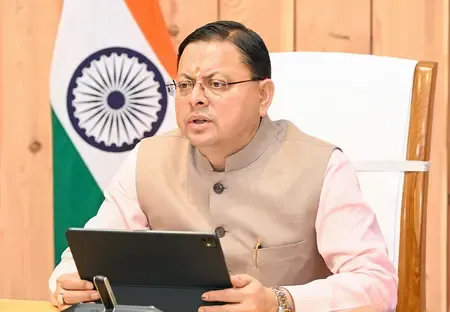Why Should You Consider the PM Surya Ghar Scheme for Cheaper Power?

Synopsis
Key Takeaways
- Switch to solar to save on electricity bills.
- PM Surya Ghar offers subsidies for rooftop installations.
- Enjoy up to 300 units of free electricity monthly.
- Net metering provides additional income opportunities.
- Shift towards renewable energy benefits both consumers and the state budget.
Bhopal, July 22 (NationPress) The Urban Development Minister of Madhya Pradesh, Kailash Vijayvargiya, has encouraged residents to adopt solar energy instead of relying on expensive grid power available in the state and the entire nation.
He emphasized that the high cost of energy is no longer a significant concern, stating, "People are no longer focused on expensive power—what they desire is quality electricity."
Furthermore, those aiming for affordable power should consider the 'PM - Surya Ghar: Muft Bijli Yojana', which not only provides low-cost electricity but also opens avenues for income through net metering, according to the minister.
He pointed out that the issue has shifted from the cost of power to ensuring a constant power supply.
A comparison of electricity tariffs for 2025 indicates that Madhya Pradesh is among the top five states with the most expensive electricity rates.
Data gathered from regulatory bodies and energy platforms shows that domestic users in Madhya Pradesh are charged up to Rs 7.25 per unit for consumption exceeding 300 units, with fixed fees ranging from Rs 30 to Rs 100 per kilowatt.
Commercial consumers are burdened with rates that can reach Rs 8.75 per unit, making electricity a considerable financial burden for businesses.
Under this scheme, households that install rooftop solar systems can receive subsidies of up to Rs 78,000 and benefit from up to 300 units of free electricity each month.
This initiative also allows consumers to sell excess power back to the grid, turning their homes into micro power stations.
In Madhya Pradesh, where energy subsidies already challenge the state budget, boosting solar adoption could relieve fiscal constraints while empowering residents.
As energy demands increase and traditional tariffs stay high, Minister Vijayvargiya's remarks may signify a shift in public dialogue towards decentralization, sustainability, and consumer empowerment.
Whether citizens choose to install rooftop systems or policymakers enhance solar infrastructure, the cost of electricity has evolved from just a budgetary item to a political and technological frontier.










